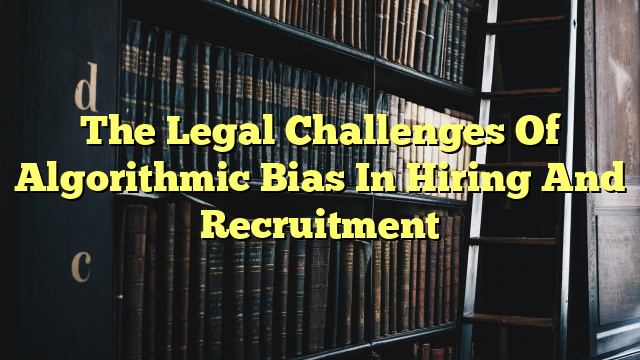Table of Contents
Background
Hiring and recruitment processes have grown increasingly complex as companies strive to find the best-suited applicants for each position. With the emergence of technology like artificial intelligence (AI) and machine learning (ML), employers have found new opportunities to increase efficiency in the hiring process and reduce human biases. Algorithms have become a popular tool for recruiting and screening potential applicants, but introducing algorithms to the hiring process can create unique legal challenges for employers.
Legal Issues Employers Face
Hiring practices are subject to a variety of laws including anti-discrimination laws, privacy regulations, and data protection requirements. Employers have to be aware of how these laws may affect their recruitment practices.
In the United States, the primary law protecting individuals from discrimination is Title VII of the Civil Rights Act of 1964. This law prohibits employers from making hiring decisions on the basis of race, religion, color, national origin, or sex. Employers must also comply with state and local laws, which may include additional categories of prohibited discrimination.
Privacy and data protection laws can also be relevant to the recruitment process. As employers collect personal data on potential applicants, they must ensure that the data is collected and used lawfully, and that the applicants’ personal information is not shared without their consent.
Algorithmic Bias
Algorithms are increasingly used to assist employers in the recruitment process, but algorithms are not immune to bias. Algorithmic bias can arise when the data used to train a model is incomplete or unrepresentative of the target population. For example, if an algorithm is trained on a dataset that is comprised mostly of male applicants, then the algorithm may favor male applicants over female applicants.
Algorithmic bias can also be introduced when an algorithm is used to evaluate applicants. Algorithms typically rely on a numerical scoring system to evaluate an applicant’s qualifications, and this scoring system can be influenced by external factors such as gender or race.
Mitigating Bias
There are several steps employers can take to mitigate bias in recruitment algorithms. First, employers should examine their hiring data to identify any potential sources of bias. This can be done by analyzing the data to determine whether certain characteristics, such as gender or race, have any impact on an applicant’s chances of being hired. If any potential sources of bias are identified, employers should take steps to address the issue.
Second, employers should use a variety of data sources to ensure that the data used to train the algorithm is representative of the target population. This can be done by collecting data from different sources, such as job boards, social media, or other recruitment platforms.
Third, employers should use machine learning fairness techniques to detect and address potential sources of bias. These techniques can help to identify and mitigate any bias that may be present in the data or the algorithm itself.
Finally, employers should regularly monitor and evaluate their recruitment algorithms to ensure that they are not introducing any new sources of bias. Regular evaluation and monitoring of algorithms can help employers to quickly identify any potential issues and take appropriate action.
Impact of Bias
Bias in recruitment algorithms can have a significant impact on an employer’s ability to attract and hire quality candidates. Algorithmic bias can lead to a lack of diversity in the workforce, which can hamper an employer’s ability to effectively serve their customers and clients.
In addition, algorithmic bias can increase the risk of legal liability for employers. If employers are found to be in violation of any anti-discrimination laws due to an algorithm-based hiring decision, they may face significant financial penalties.
Conclusion
Algorithms can be a useful tool for employers in the recruitment process, but they can also introduce significant legal challenges. Employers need to be aware of the

